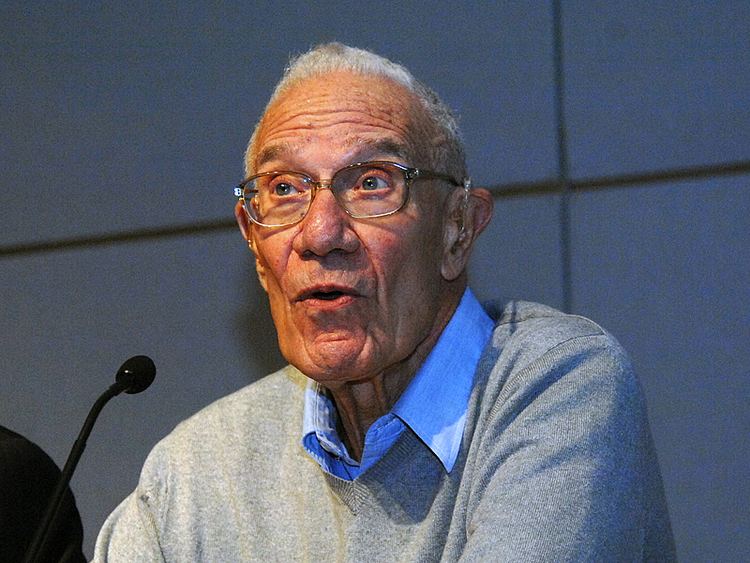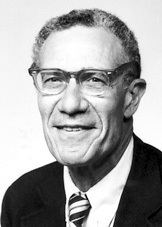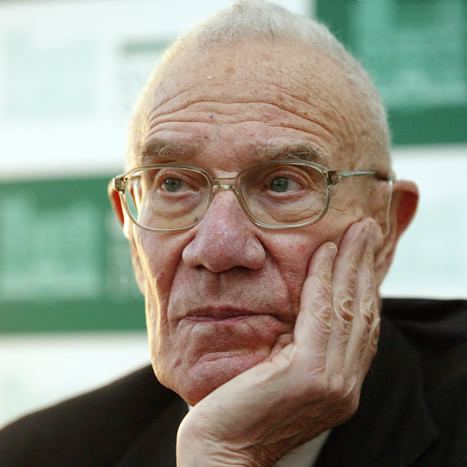Nationality American Name Robert Solow Institution MIT Role Economist | Education Harvard University | |
 | ||
School or tradition Neo-Keynesian economics Influences Wassily LeontiefPaul Samuelson Books Growth Theory: An Exposition, Learning from "learning, An almost practical step towa, Monopolistic competition and macr, The labor market as a social inst Similar People | ||
Contributions Exogenous growth model | ||
Robert solow in conversation with paul krugman inequality what can be done
Robert Merton Solow, GCIH (; born August 23, 1924), is an American economist, particularly known for his work on the theory of economic growth that culminated in the exogenous growth model named after him. He is currently Emeritus Institute Professor of Economics at the Massachusetts Institute of Technology, where he has been a professor since 1949. He was awarded the John Bates Clark Medal in 1961, the Nobel Memorial Prize in Economic Sciences in 1987, and the Presidential Medal of Freedom in 2014. Three of his PhD students, George Akerlof, Joseph Stiglitz, and Peter Diamond, later received Nobel Memorial Prizes in Economic Sciences in their own right.
Contents
- Robert solow in conversation with paul krugman inequality what can be done
- Robert solow new ideas for a new world
- Biography
- Economic contributions
- MIT Economics 19601979
- Honours
- Books
- Book chapters
- Journal articles
- References

Robert solow new ideas for a new world
Biography

Robert Solow was born in Brooklyn, New York, into a Jewish family on August 23, 1924, the oldest of three children. He was well educated in the neighborhood public schools and excelled academically early in life. In September 1940, Solow went to Harvard College with a scholarship at the age of 16. At Harvard, his first studies were in sociology and anthropology as well as elementary economics.

By the end of 1942, Solow left the university and joined the U.S. Army. He served briefly in North Africa and Sicily, and later served in Italy during World War II until he was discharged in August 1945.

He returned to Harvard in 1945, and studied under Wassily Leontief. As his research assistant he produced the first set of capital-coefficients for the input–output model. Then he became interested in statistics and probability models. From 1949–50, he spent a fellowship year at Columbia University to study statistics more intensively. During that year he was also working on his Ph.D. thesis, an exploratory attempt to model changes in the size distribution of wage income using interacting Markov processes for employment-unemployment and wage rates.

In 1949, just before going off to Columbia he was offered and accepted an Assistant Professorship in the Economics Department at Massachusetts Institute of Technology. At M.I.T. he taught courses in statistics and econometrics. Solow's interest gradually changed to macroeconomics. For almost 40 years, Solow and Paul Samuelson worked together on many landmark theories: von Neumann growth theory (1953), theory of capital (1956), linear programming (1958) and the Phillips curve (1960).
Solow also held several government positions, including senior economist for the Council of Economic Advisers (1961–62) and member of the President's Commission on Income Maintenance (1968–70). His studies focused mainly in the fields of employment and growth policies, and the theory of capital.
In 1961 he won the American Economic Association's John Bates Clark Award, given to the best economist under age forty. In 1979 he served as president of that association. In 1987, he won the Nobel Prize for his analysis of economic growth and in 1999, he received the National Medal of Science. In 2011, he received an honorary degree in Doctor of Science from Tufts University.
Solow is Founder of the Cournot Foundation and the Cournot Centre. After the death of his colleague Franco Modigliani, Solow accepted an appointment as new Chairman of the I.S.E.O Institute, an Italian nonprofit cultural association which organizes international conferences and summer schools. He is a trustee of the Economists for Peace and Security.
Solow's past students include 2010 Nobel Prize winner Peter Diamond, as well as Michael Rothschild, Halbert White, Charlie Bean, Michael Woodford, and Harvey Wagner. He is ranked 23rd among economists on RePEc in terms of the strength of economists who have studied under him.
Economic contributions
Solow's model of economic growth, often known as the Solow-Swan neo-classical growth model as the model was independently discovered by Trevor W. Swan and published in "The Economic Record" in 1956, allows the determinants of economic growth to be separated into increases in inputs (labour and capital) and technical progress. The reason these models are called "exogenous" growth models is the saving rate is taken to be exogenously given. Subsequent work derives savings behavior from an inter-temporal utility-maximizing framework. Using his model, Solow (1957) calculated that about four-fifths of the growth in US output per worker was attributable to technical progress.
Solow also was the first to develop a growth model with different vintages of capital. The idea behind Solow's vintage capital growth model is that new capital is more valuable than old (vintage) capital because new capital is produced through known technology. Within the confines of Solow's model, this known technology is assumed to be constantly improving. Consequently, the products of this technology (the new capital) are expected to be more productive as well as more valuable. The idea lay dormant for some time perhaps because Dale W. Jorgenson (1966) argued that it was observationally equivalent with disembodied technological progress, as advanced earlier in Solow (1957). It was successfully pushed forward in subsequent research by Jeremy Greenwood, Zvi Hercowitz and Per Krusell (1997), who argued that the secular decline in capital goods prices could be used to measure embodied technological progress. They labeled the notion investment-specific technological progress. Solow (2001) approved. Both Paul Romer and Robert Lucas, Jr. subsequently developed alternatives to Solow's neo-classical growth model.
Since Solow's initial work in the 1950s, many more sophisticated models of economic growth have been proposed, leading to varying conclusions about the causes of economic growth. For example, rather than assume people save at a given constant rate that Solow did, subsequent work applied a consumer-optimization framework to derive savings behavior endogenously, allowing saving rates to vary at different points in time, depending on income flows, for example. In the 1980s efforts have focused on the role of technological progress in the economy, leading to the development of endogenous growth theory (or new growth theory). Today, economists use Solow's sources-of-growth accounting to estimate the separate effects on economic growth of technological change, capital, and labor.
Solow currently is an emeritus Institute Professor in the MIT economics department, and previously taught at Columbia University.
MIT Economics (1960–1979)
In the early 1960s the Massachusetts Institute of Technology (MIT) was the native land of the “growthmen.” Its leading light, Paul Samuelson, had published a pathbreaking undergraduate textbook, Economics: An Introductory Analysis. In the sixth edition of Economics, Samuelson (1964) added a “new chapter on the theory of growth.” Samuelson drew on the work on growth theory of his younger colleague Robert Solow (1956)—an indication that growthmanship was taking an analytical turn. The MIT economists were thus growthmen in two senses: in seeing growth as an absolutely central policy imperative and in seeing the theory of growth as a focus for economic research. What the MIT growthmen added was a distinctive style of analysis that made it easier to address the dominant policy concerns in tractable formal models. Solow’s (1956) model was the perfect exemplar of the MIT style. It provided the central framework for the subsequent developments in growth theory and secured MIT as the center of the universe in the golden age of growth theory in the 1960s (Boianovsky and Hoover 199–200).
